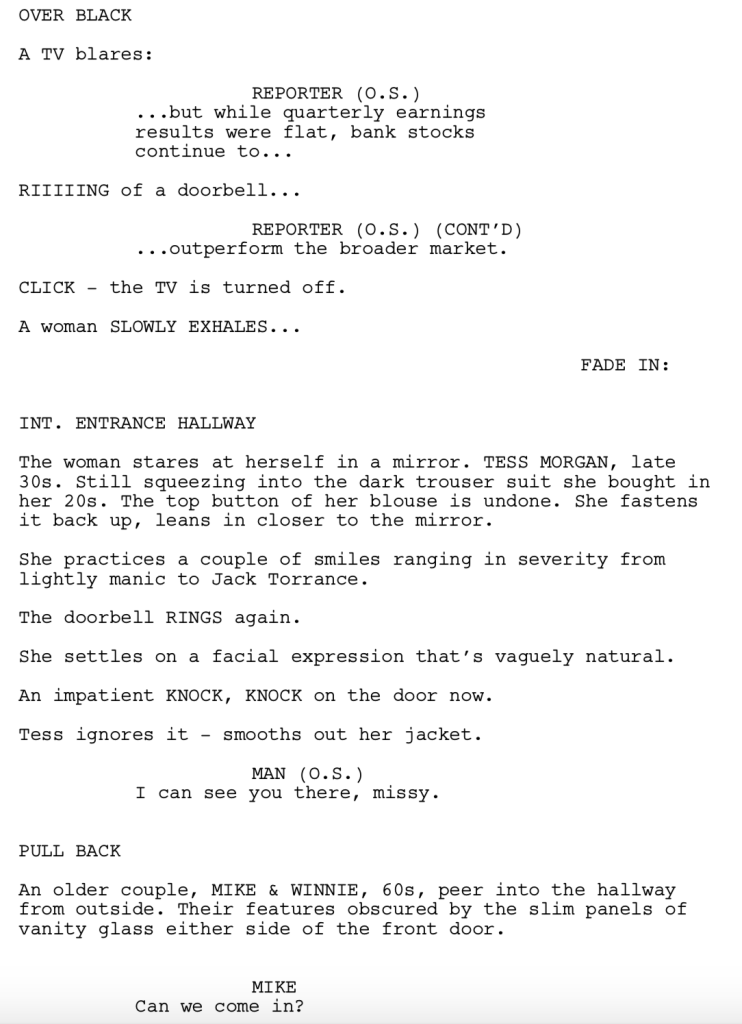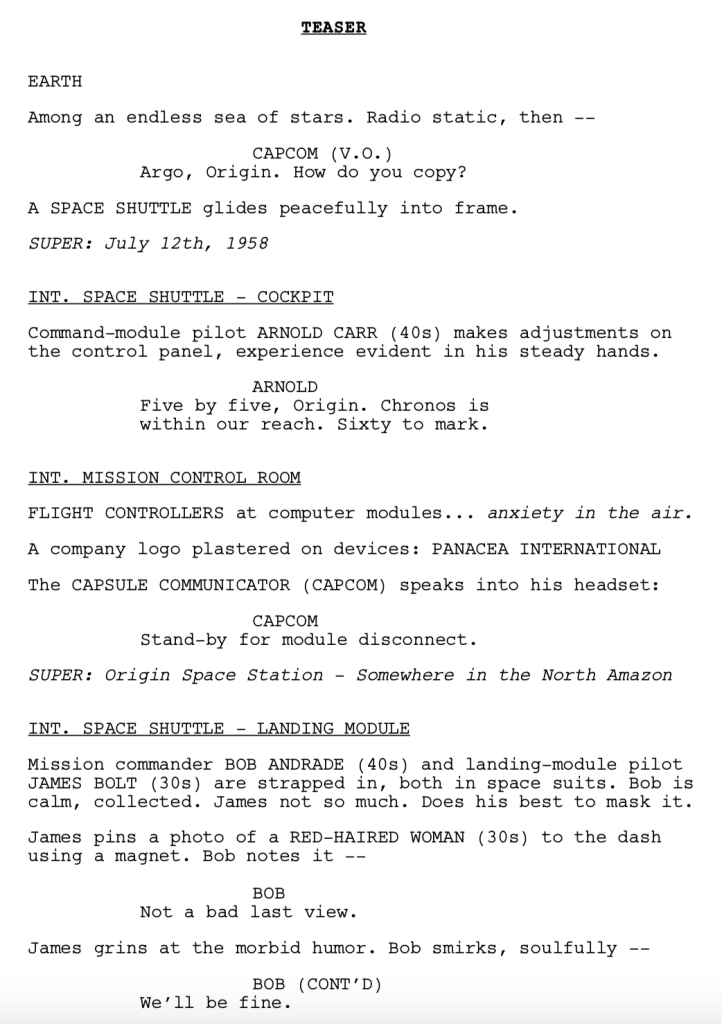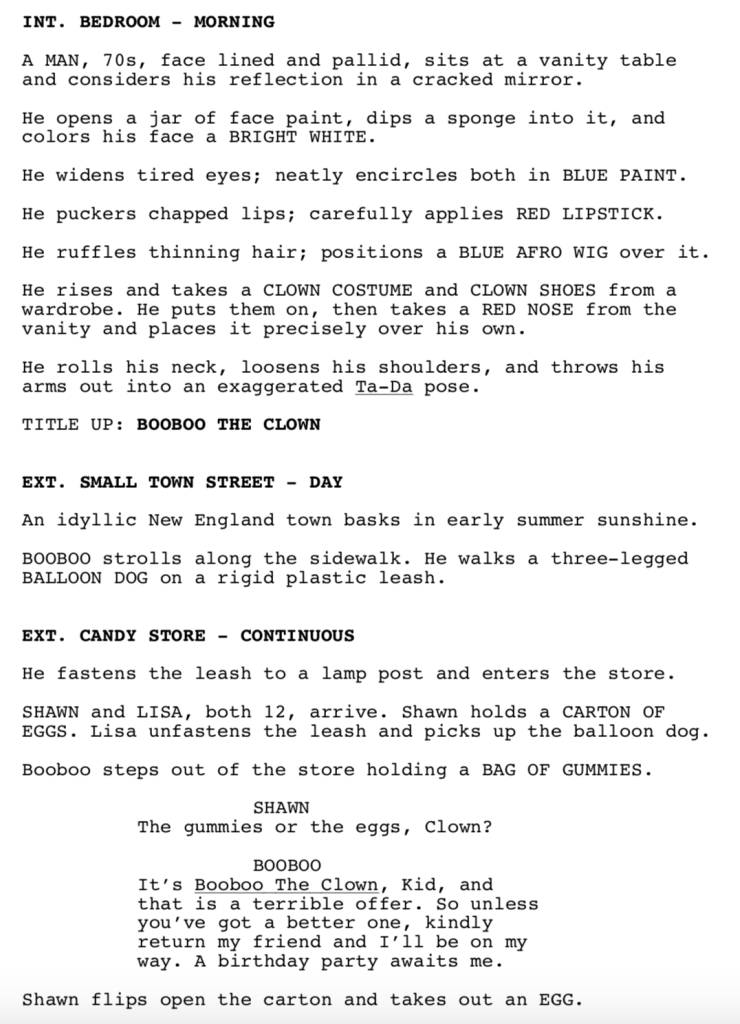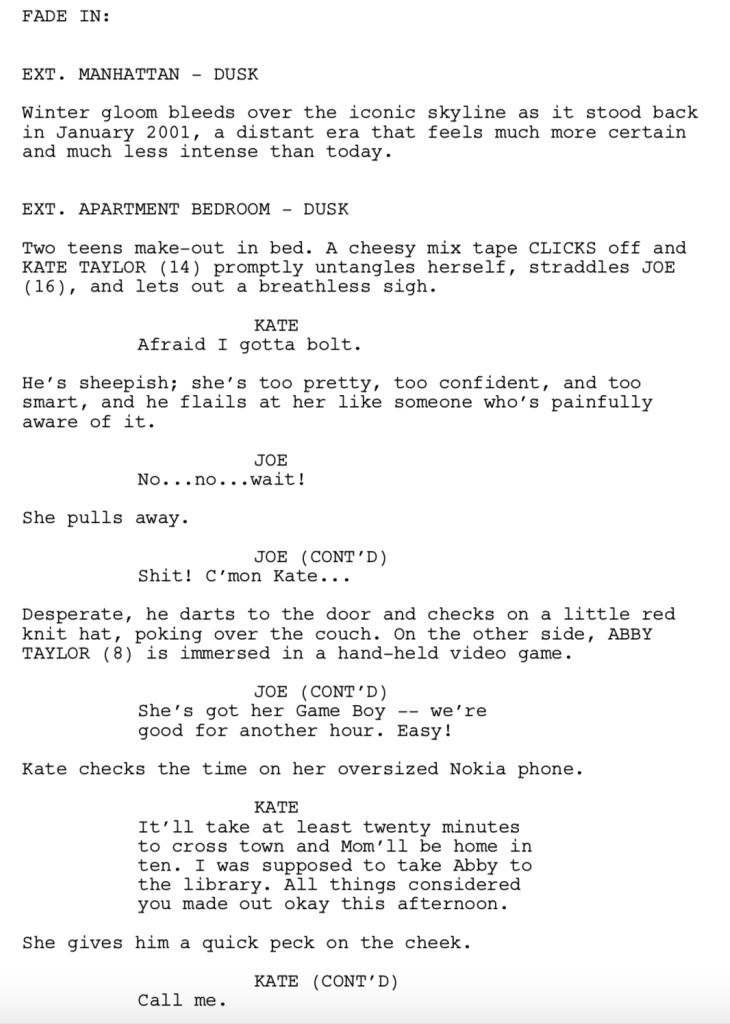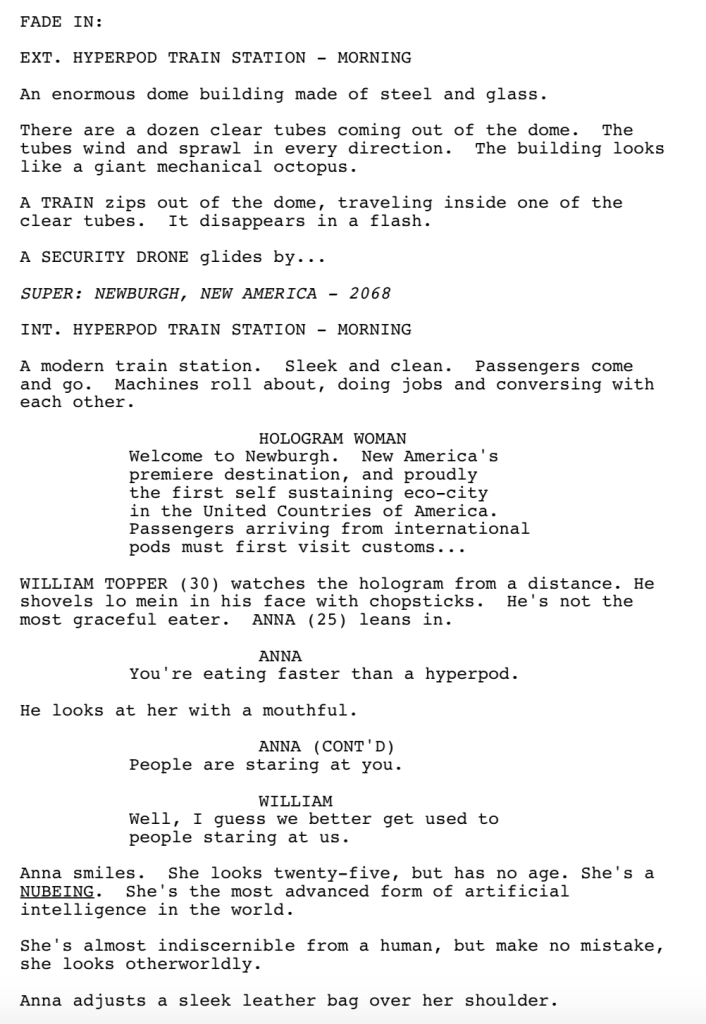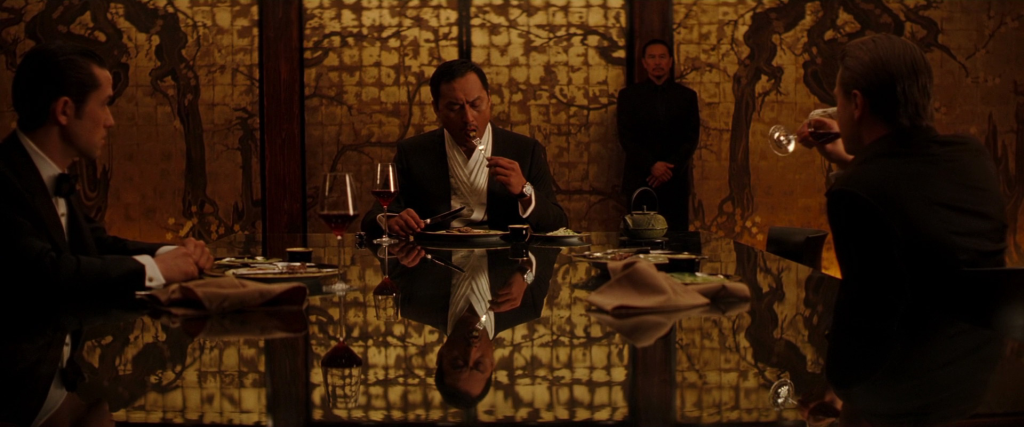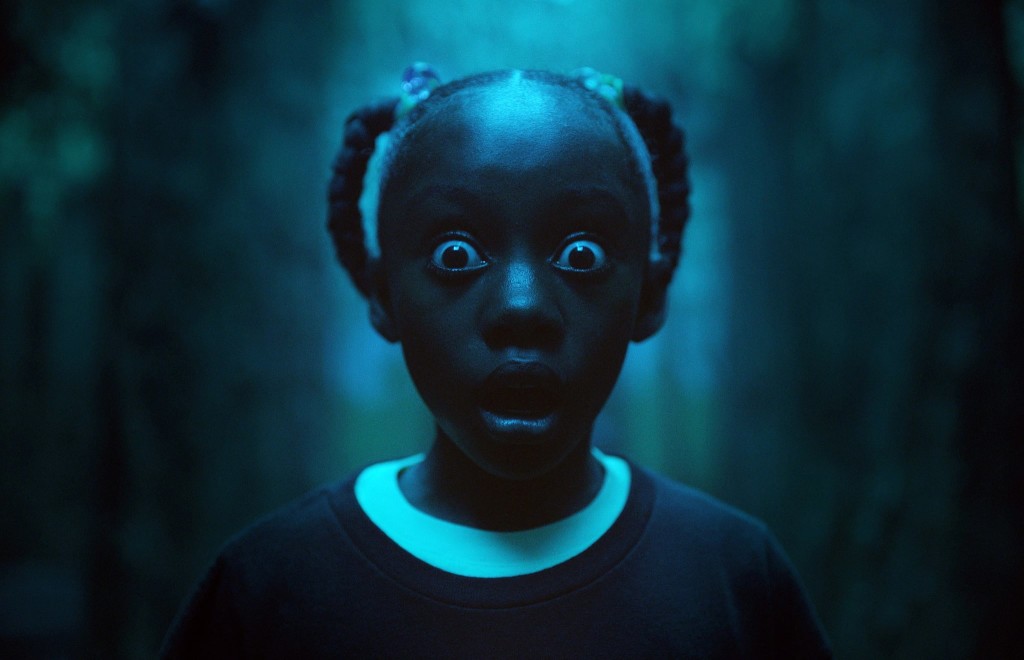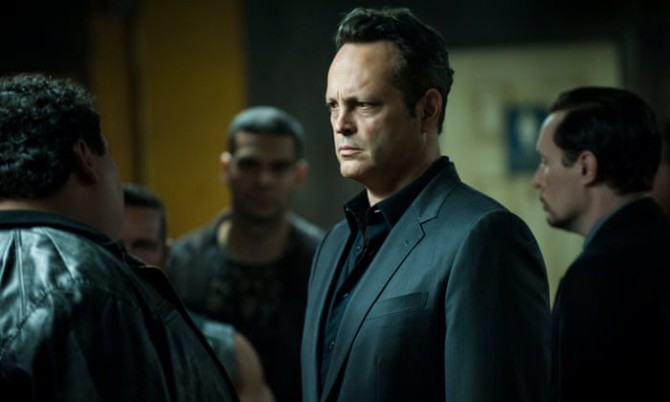In it, I share my thoughts on Apple’s confusing announcement for their new streaming service, Jordan Peele’s emergence as a screenwriting hero, give thumbs up and thumbs down to all those new trailers that debuted in the last month, and oh yeah, review a screenplay that I swore I would never ever review for as long as I lived. You’re going to want to check it out. If you haven’t received the newsletter, make sure to check your SPAM and PROMOTIONS folders in your e-mail program. If you can’t find it there, e-mail me at carsonreeves1@gmail.com with the subject line, “NEWSLETTER!” and I’ll send it to you. Enjoy!
It’s a slow weekend at the cinema which means I’ll have to watch something Netflix snuck onto its service while no one was looking (their preferred method of advertising). Who wants to start a website with me called “Media Aggregator” where we distill the 8 million TV and movie options down to a select few you should be watching? We’ll make billions. BILLIONS I SAY!
In the meantime, here are some screenplays to read.
Amateur Showdown is a mini-screenplay tournament where you read as much of each script as you can, then vote for your favorite in the comments section. Whoever receives the most votes gets a review next Friday. If you’d like to submit your own script to compete in a future Amateur Showdown, send a PDF of your script to carsonreeves3@gmail.com with the title, genre, logline, and why you think your script should get a shot.
Title: Bank, Die, Repeat
Genre: Time Loop Heist
Logline: A washed-up realtor gets caught in a time loop when she tries to rob a bank. Forced to relive the heist again and again, she’s soon convinced that whatever’s in the safe is more valuable than money, it’s the key to turning her life around.
Why You Should Read: This script started life as a three word phrase – ‘time loop heist’. It ended as a dark comedy I’d pitch as ‘Jerry Lundegaard stuck inside Danny Ocean’s Groundhog Day.’ Only Jerry is now a woman named Tess. — I’ve bludgeoned the protagonist with the despondency stick. Her love life, her family life, her working life – she’s losing control of it all. If you’re interested in how (or indeed, if) she can pull it all back together again and find redemption, then give the script a go. I’d appreciate your candid thoughts.
Title: Second Earth
Genre: TV Pilot – Science Fiction
Logline: Searching for a sense of purpose, an anxiety-ridden Earth orphan arrives on the prison moon Chronos as a new guard recruit… only to stumble upon a conspiracy for the near one million prisoners to stage a mass breakout and take the moon for themselves.
Why You Should Read: In the 1920s, Henry Ford established an industrial town deep in the jungle of Northern Brazil, hoping to make his own utopia called “Fordlandia”. Now imagine instead of a small town in Brazil… he did so with the moon. The series takes place in an alternate timeline where our moon, named Chronos, is habitable and is colonized by a billionaire philanthropist in the 1960s. Our story begins in 2082 as we see the moon now sustained by serving as basically a privatized prison for the United States and the colonies of Chronos wrought with civil tension between the descendants of the first Chronos colonies (called Natives) and Earthling immigrants. We will discover the story of the failure of this would-be utopia as we are embroiled in a conspiracy plot with a scale and character count rivaling that of Game of Thrones. Think A Tale of Two Cities in space.
Title: BOOBOO THE CLOWN
Genre: Family/Fantasy/Adventure
Logline: An eccentric old clown tries to cheer up a disabled boy by telling the story of his magical adventures on a lifelong quest to win the heart of a beautiful mime.
Why You Should Read: A massive THANK YOU to the commenters of Scriptshadow who read my first draft of this script and offered their valued thoughts and notes on it, and a special shout-out to Carson for his excellent notes and advice. All helped to propel this script to the next level. Booboo The Clown is an original, entertaining, and visually-appealing family-friendly movie. This one has it all. It has a larger than life lead character – a classic underdog – and a novel supporting cast with genuine arcs that actors will queue up to play. It has adventure. It has adversity. It has smiles, laughs and tears. It has scenes you have never seen before. And, most importantly, it has a fucking heart. I have poured my heart into this script and now I’d love to read your thoughts. I send it out as words amidst the wolves. Be ravenous.
Title: Fear Box
Genre: Horror
Logline: A traumatized single mother must protect her anxiety-ridden teen daughter when their darkest fears are brought to life by a haunted worry box.
Why You Should Read: It’s 2019 and it feels like anxiety is at an all time high! The goal was to write a fun horror script that deals with anxiety in a genuine way. The worry box is a real tool used to treat childhood and teen anxiety. I sent an early draft to the Bloodlist site for coverage and the feedback was positive. I’m hoping for some constructive criticism and the answer to the ultimate question before I spend tons more time working on this – is this concept/story something you would go see?
Title: D.I.R.E.
Genre: Science Fiction / Drama
Logline: Guess Who’s Coming to Dinner set 50 years in the future. A young man takes his Artificial Intelligence fiancé back to his small mountain hometown to meet his techno-phobic family.
Why You Should Read: I’ve been reading and following Scriptshadow for the last 7/8 years. Needless to say I’m a big fan of the site and all of you guys. I’ve just been lurking in the shadows (evil laugh). I live in Los Angeles, and have been a working writer for the last decade or so… but primarily in late night TV. I haven’t been able to crack the ever elusive feature world yet. This script is my first feature where all of my feedback has been super positive. And not the fake “I’m your friend” positive… as a writer you know the difference. Anyway. I’m extremely serious about the craft, and have put a ton of work into this one. If you like SciFi dramatic mysteries… this is for you… if you hate robots then beep boop beep boop… it’s probably not your cup of ET.
As we head into the weekend, before I put up Amateur Offerings, I wanted to give people a chance to share their feelings on the WGA’s battle with the agents. For those of you not up to speed, the WGA is planning to have all of their writers walk from their agents if the agents don’t get rid of packaging. I’m NOT the authority on packaging. But here’s how I understand it. When a writer comes up with a show idea, their agent will say, “Hey, as a favor to you, I’m going to allow you to keep my commission in return for you to allow me to package this project.” Packaging means attaching a director and talent (all within the agency – never from another agency – that’s a key distinction).
The thing is, when an agency packages something, they get a fee from the studio (the bigger the project, the bigger the fee, obviously) that often includes a percentage of the profits of that show. What this means is that agencies will now make more off a show than the person who actually created it. Nuts, right? Well, it gets uglier. If the writer has a project with say, Bradley Cooper attached, and Bradley Cooper is repped at another agency, they won’t bother putting the project together at all. Why? Because they don’t get their packaging fee. This means hundreds (thousands?) of potential shows have never seen the light of day because agents won’t touch a project that contains elements from another agency. This has created a culture where agencies no longer have any incentive to serve their clients’ interest. Their only goal is to package so they can get a piece of the pie.
Like I said, I’m not the authority here. And I may have gotten some of this wrong. If I did, please let me know and I’ll correct it. Also, the agencies argue that many of these projects only come together because they’re packaged. I don’t think there’s any way to prove that this is true or false, but I will say this. I’ve heard from several working writers who have moved from one of the Big 4 agencies to the agency tier just below them (and who don’t package), that they got a lot more work at the Big 4 agency. The consistent response was, “They’re scumbags but at least they’re scumbags that got things done.” If you want a more in-depth look at the issue, read The Wire creator’s feelings about packaging. It’s a good read, although a little confusing. It sounds to me like his problem was more about his literary agency and former TV agent ripping him off than it was about packaging. However, maybe someone can clear that up.
I’d love to hear arguments from both sides, especially agents, if you’re out there. I’m yet to hear a compelling argument about why packaging is okay. If there’s one out there, let’s hear it! Also, let’s try to keep this discourse civil. :)
I am FULLY AWARE that some of you are going to say to me, “ENOUGH, CARSON! ENOUGH WITH THE FIRST 10 PAGES! WE GET IT! THEY HAVE TO BE GOOD!”
Here’s the problem. They’re not good. The scripts I’m reading continue to have boring, bland, subpar, or outright bad first scenes. It occurs so often, I’m shocked when someone actually does write a good first scene. I’m mixing messages here. First 10 pages? First scene? What are we talking about, Carson? Let’s go with the first scene. It’s easier to build an article around that.
Now what I’m about to tell you is going to make you a hundred times better writer. Yes, I’m making that bold of a claim because that’s how powerful this piece of advice is. Are you ready? Here’s the tip: TELL A STORY WITH YOUR FIRST SCENE.
Do not open with an image. Do not open with a scene fragment. Do not start with a montage. Don’t set up your character. Don’t set up your plot. Whoa whoa whoa wait a minute, Carson. Don’t set up your character? Isn’t that one of the first things we’re told to do? Sure. Except setting up your character as opposed to telling a story is exactly why YOUR FIRST SCENE IS SO BAD. If you tell a good story with your first scene, your character will automatically be set up.
Now where were we?
Oh yeah.
The most powerful way to start your screenplay, and therefore the best chance you have of pulling a reader in, is to TELL A STORY. What does that mean? I’m glad you asked. Telling a story, in this context, is the act of writing a MINI-MOVIE to start your screenplay. That means you start with a first act (buildup and anticipation), move to the second act (character encounters conflict/obstacles), and kick’em in the gonads with your third act (resolution). Except because it’s the ending of your first scene and not an entire movie, your resolution will usually pose a question that makes people want to keep reading.
Confused?
Don’t worry. I’m going to give you five examples of writers who got this right. But before we get to that. A couple of things. I don’t care if you list examples of movies in the comments section that don’t do this. The reality is that movies which have a good story in their opening scene almost always turn out to be good movies as a whole. Also, note that many movies are forced to add opening credit scenes that weren’t in the original scripts. This is due to contractual union stuff that the filmmakers have no control over. It’s important to know this so that when you watch slow boring opening credits sequences in your favorite movies, you don’t misinterpret that to mean it’s okay to do so yourself. Let’s get started.
Inception – One of the most famous opening scenes of the past decade. A man arrives on a beach, walks into a castle, encounters another man who wonders if he’s here to kill him. Cut to a grimy bathroom with the beach man in a chair over a bath tub. Cut to a train where the man watching over the man in the bathroom is asleep and a young Asian man is watching over him. These three storylines intercut with one another as we realize some sort of mind heist is going on, which plays out to an elaborate conclusion. It can be argued that there are one too many mysteries being set up here. Regardless of that, Christopher Nolan is giving us a mini-movie for the first scene which is exactly what I’m asking you to do.
Us – Us has a much simpler first scene, but arguably a more effective one. I’m a huge advocate of simple storytelling so I love how Peele approaches this. A young girl is at a carnival. Her parents get distracted. She wanders off. She comes upon an empty Hall of Mirrors. She stumbles inside. She gets lost. She hears whistling. She follows it. Finally she’s confronted by something horrifying. Note that with this opening, all that’s happening is a girl wandering off. The scene plays out just as powerfully in its quiet moments (walking past a creepy homeless man) as it does its heightened ones (someone else is in the Hall of Mirrors with her). I bring this up to remind you that a story doesn’t need to have a million bells and whistles to work. As long as the story being told is compelling you’re good.
A Quiet Place – A Quiet Place’s first scene is its second best (after the birth scene). Like Us, we’re dealing with a very simplistic character goal. Travel into town and get supplies. However, we quickly realize there’s an added obstacle. They can’t make any noise. This heightens the tension of the scene considerably. They get what they need. The young son secretly pockets a noise-making toy. They walk back home. Just as they’re about to cross the bridge, the toy starts blaring, and the monster snatches him up.
The Matrix – A coincidence that one of the best sci-fi movies ever starts with a scene that tells a story? Two hackers, a man and a woman, are talking on a computer. The woman is warned that the cops have spotted her. The police show up to the building she’s in. This woman is wanted for something. But what? Here’s where things get fun. Three mysterious “agents” show up. They inform the police chief that the men they just sent up to get this woman are “already dead.” Huh? Cut to the police who try and kill the hacker woman, Trinity. She utilizes inhuman moves to kill them, then runs from the Agents, ending in a bizarre standoff where she charges towards a phone booth despite the fact that a truck is barreling towards and will crush it. They reach the booth at the same moment but she disappears before the truck can kill her! If this scene doesn’t inspire you to tell a story with your opening scene, I don’t know what will.
Promising Young Woman – Promising Young Woman is a screenplay that made the top of the Black List last year. I’m guessing its opening scene was a big reason why. We open on a bar with a bunch of stock trader types staring down a beautiful woman who’s hammered. Easy pickings. Except the nice guy of the group feels bad. Doesn’t want the girl to get hurt. Takes her back to his place. Hmm, maybe he’s not so nice after all. He’s got this hot wasted girl all alone in the privacy of his apartment. Gotta take advantage of that. Except, just as he makes his move, she sits up, loses the distant gaze, and is completely coherent. The girl is fine. She always was fine. She’s played him to prove a point – that like all men, he’s a predator.
I would be perfectly fine if, for the rest of your screenwriting days, you wrote your first scenes this way. “But Carson… each screenplay is different and you should adjust your approach accordingly.” No. You can make this work for EVERY SCREENPLAY and 99% of the time, it will be better than whatever other option you were considering. Telling a story both pulls us in AND proves you can write, the two things that matter most to a reader.
Just so you have some reference points, here are a few movies that don’t tell stories with their opening scenes. Velvet Buzzsaw. There’s no story here. It’s a man wandering through an art show. It’s clearly meant to establish character and subject matter. But in not adding a story to the proceedings, it comes off as neutered and uninteresting. As long as we’re on Netflix movies, Roma is another good example. Cuaron sets up this house via lots of boring imagery. But there’s no story tying it together. Is it a coincidence that Roma was considered to be the most boring movie of the year? You decide. Or A Wrinkle in Time. That movie starts with a girl dreaming about her dead father. Does it establish that the girl’s father is dead? Sure. Did it tell a story that kept us engaged while doing so? Nope. Fail.
I want to finish up by saying one more thing. ALWAYS FAVOR THE STORY OVER THE SETUP. You’re going to want to set things up. Set up characters. Set up your world. Set up some plot. Of course you’ll need to do this. But these things should all be secondary to creating an entertaining story with your scene. If you focus too much on the setting up part, the story part will fade into the background and we’ll lose interest. A good example of this is the opening to Solo: A Star Wars Story. We meet Han Solo driving back from somewhere. He’s stolen something important (gotta set that up!). Then we gotta set up this orphanage he lives in. Then we gotta set up Q’ira. Than we gotta set up that him and Q’ira are together. Then we gotta set up what their plan of escape is. There’s so much setup that even though they’re telling a story in the scene, it gets lost amongst all the setup! If you want to win over the reader, give us a great story in that opening scene first… and set up your script second. You’ll thank me when Sony buys your script and says they were hooked from the very first page.
Now go get’em!
I’ve decided to extend my Nicholl Script Consultation discount for one more week! That’s $100 off 4 pages of notes. If you send me your script by Sunday, I can get you your notes back by April 7, which gives you three full weeks before the deadline. E-mail me (carsonreeves1@gmail.com) with the subject line: “NICHOLL.” Also, ask about my new deluxe logline consolation package, where we e-mail back and forth until we get your logline just right. E-mail me with the subject line: “LOGLINE!”
Genre: Thriller/Sci-Fi
Premise: (from Black List) When a man’s estranged wife gets lost inside of her own mind during an experimental procedure, he must navigate her subconscious to find her in the memories of their past.
About: Brett Treacy and Dan Woodward are new writers. They finished top 100 in 2017’s Launch Pad competition with a script called Trapline. Then last year they made the leap to the big time – the Black List, grabbing a respectable 14 votes. Brett Treacy was a production assistant on Westworld.
Writer: Brett Treacy & Dan Woodward
Details: 120 pages
There I was, 15 pages into In Retrospect, sweating bullets for the writers. In theory, these ideas are goldmines. They’re high concept. They’re exciting. They feel like a movie. In practice, they’re nightmares. I can confirm this from my own experiences as well as from reading similar scripts from other writers.
The problem lies within the rule set that governs the script’s mythology. The disparity between what you believe writing the script will be like (fun!) and what it’s actuality like (misery!) is so much bigger than anticipated, it gives way to a sort of surrender as the writing process goes on. It’s never fun when you realize a script is going to take five times as much effort as you anticipated. What am I talking about? Read on.
James, a photographer, gets a call from a mysterious scientist who says he needs him to come immediately. James’ ex-wife, Sloane, is in trouble. James arrives at Vicaricorp where he’s whisked into a room to see his wife is in a coma. They explain to James that Sloane was part of a cutting-edge memory experiment to cure Alzheimer’s and that something went wrong. As James is Sloane’s emergency contact, he’s the only one legally able to help them. So what do you need me to do, he asks. We need you to go inside your wife’s memories and bring her back.
Before James even knows what that entails, he’s placed in a coma and linked to Sloane. The memory operational rules are as unclear to James they are to us. James can navigate Sloan’s memories by grabbing onto “nearby objects.” Also, James can watch himself in these memories as Memory James. Or he can inhabit Memory James and communicate with Memory Sloan. Keep in mind that Memory Sloan is not real Sloan. She’s just a memory. He needs to trick Memory Sloan to help him find where real Sloan is hiding.
We then take a literal trip down memory lane. Their first date at a bar. Their first love-making session. Dinner with the family. Sometimes James enters memories that he’s not in. For example, he accidentally stumbles into a memory of Sloan banging a mean guy in college. — Because James has no idea what he’s doing, he just keeps stumbling through old memories. That is until he senses there are other “memory travelers” in here with him. James demands to be woken up. He wants answers!
What James learns is that Vicaricorp has found a way to donate memories from one person to another. They hope to use this technology to help people with traumatic memories overwrite them with nicer memories from the “donor.” Sloan, it turns out, is their best donor. But for some reason she’s run away from them into the deepest recesses of her mind, her “emotional core.” In order for James to get her back, he will need to enter this core. And in doing so, access the most intense memories yet. Can he do it? Or maybe the more appropriate question is: Should he?
As you can see, In Retrospect has some good ideas in it. But there’s so much it has to crawl through to get to those ideas, it’s more an exercise in navigating bizarre infrastructure than it is a fun engaging story. For starters, there’s an entire 30 pages of scene fragments. When James first goes inside his ex-wife’s memories, he’s rocketing through them so fast, none of the scenes have a chance to play out. It’s like that college friend of yours who gets a hold of the remote and never stops flipping through the channels.
If the whole point of this story is to explore a broken marriage, why rush through the memories? We should be plopping down and exploring each memory in detail, figuring out what went wrong.
Even once we get out of that, the script suffers from a rule set foggier than an Oregon highway. I didn’t understand how to flip from one memory to the next (grab an object??). When you switched to a memory, was it random? Or could you control it? Never clear. The stuff where he could inhabit himself or remain an invisible third party was murky at best. And when he did inhabit himself, he could alter the memory by changing the conversation or action? How does that work? Memories can’t change.
In every movie, you either sign the “I’m going along with this” agreement or you don’t. It’s why some people love A Quiet Place (they signed on) and others hate it (they didn’t). Your job as a writer is to make signing that agreement as easy as possible. The murkier your rules, the less likely it is we’re signing that piece of paper. I ripped this agreement up as soon as that weird third person stuff showed up.
And I’ll take this opportunity to promote ONE MORE TIME that the best screenwriting is SIMPLE SCREENWRITING. While the gears grinding underneath your screenplay may be far-reaching and complex, the stuff THE READER SEES? That stuff needs to be as simple as possible.
Despite this issue, there were some things I liked. I liked that the doctors/scientists were in a hurry. They needed to get Sloan out quickly. Not only does this add urgency to the overall plot, but it helped individual scenes as well. When James first shows up at the facility, we have the potential for a long and boring exposition scene. A lot of writers fall apart when they have to convey heavy exposition. But because these scientists were in such a hurry, we moved through the exposition quickly. Contrast this with one of the worst exposition writers in Hollywood, Jonathan Nolan. His exposition scenes are so egregious because they rarely have any urgency behind them. They’re all two characters sitting in a room with the rest of their lives to chat if need be. Beware JNol exposition.
The writers also do a nice job holding some of the plot back. As writers, we’re eager to expose our genius ideas as soon as the plot will let us. If we’ve got a cool story beat, darnit if we don’t throw it at the audience immediately. Instead, hold some things back! Give us the first half on page 20. Then give us the second half on page 70. That’s what Treacy and Woodward do. They give us the bare essentials of the memory technology in the first scene. Then tell us what’s REALLY going on during a scene deep in the second act.
Unfortunately, this script needs a lot more drafts if it’s ever going to meet its potential. Slop Century.
[ ] What the hell did I just read?
[x] wasn’t for me
[ ] worth the read
[ ] impressive
[ ] genius
What I learned: Never give the reader what they want when they want it. Readers are willing to wait if they’re told something will be reveled later. I loved it when the scientists were showing James their facility and James said, “I want to see her.” The head scientist didn’t say, “Okay, here she is.” He said, “We’ll get to that.” Always make them wait!
What I learned 2: Beware writing about major human experiences you have no experience with yourself. It was so clear by the casual nature of which this divorce was explored that neither of these writers had experienced divorce themselves. Divorce is a traumatic experience that redefines your life. It isn’t like a breakup where you shrug your shoulders and walk away. Money is involved. Kids are involved. Property is involved. And the feeling of failing at the institution of marriage itself cuts you to your core. — I’m not saying you can’t write about divorce in any capacity if you’ve never gone through it. I’m saying you probably don’t want to write a movie that’s specifically about divorce if you haven’t been divorced yourself. There’s no way you’ll be able to explore it convincingly. Readers always pick up on that. You want to see a guy tell a story about divorce who I KNOW has been through a divorce? Watch this clip (beware – it’s not an easy watch).


